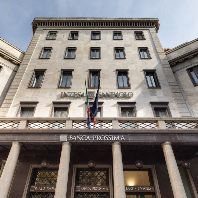The Knight Frank Prime Global Cities Index records first quarterly fall since 2009. The value of prime property in the world's key cities fell by 0.4% in the first quarter of 2012. This represents the index's first quarterly fall since the depths of the global recession.

London (pictured) and Singapore are proof that there is still a level of resilience in the prime markets.
Although a milestone, the index's negative quarterly growth is not surprising. Quarterly price growth has been below 2% since Q1 2010 and it averaged only 0.6% in 2011.
The first three months of 2012 brought with it little new momentum. The Eurozone's debt debacle remained at the forefront of the global economic agenda, several critical elections were on the horizon (Russia, France, Greece) and Asia's highly-effective cooling measures showed no sign of being relaxed. Against this backdrop some luxury buyers took to the side-lines to observe their market's trajectory.
Despite the overall index's sluggish performance four prime markets achieved double-digit growth over a 12-month period; Nairobi, Jakarta, Miami and London. Perhaps most surprisingly is the fact that the top five performing cities were spread across four continents North America to be the only continent to appear twice (see overleaf).
London and Singapore are proof that there is still a level of resilience in the prime markets with both cities shrugging off the introduction of new stamp duties in the first quarter of 2012. In London both prices and applicant numbers increased despite the stamp duty rise to 7% for individuals buying homes over £2 million.
In Singapore the new 10% stamp duty for foreign buyers, which was introduced in December 2011, dented demand but not prices according to Nicholas Holt, Knight Frank's Asia-Pacific Research Director.
Holt comments, "Prices not only held up but actually increased slightly at the very top end of the Singapore market in Q1 2012. This was not only due to fairly resilient domestic demand, but also due to wealthy Chinese, Indonesian and Indian buyers who continued to buy in this segment of the market undeterred by the surtax."
In our view the overall index will remain subdued in 2012 fluctuating between marginal price falls and rises (with London, Moscow, Jakarta, Nairobi and Singapore expected to be the strongest performers) but it seems unlikely we are on the cusp of a new deflationary cycle in luxury global house prices.
The safe-haven argument still resonates. Capital flight will continue to focus on cities with low political risk, transparent legal systems, good security and ideally those with an HNWI-friendly tax regime.
Source: Knight Frank







